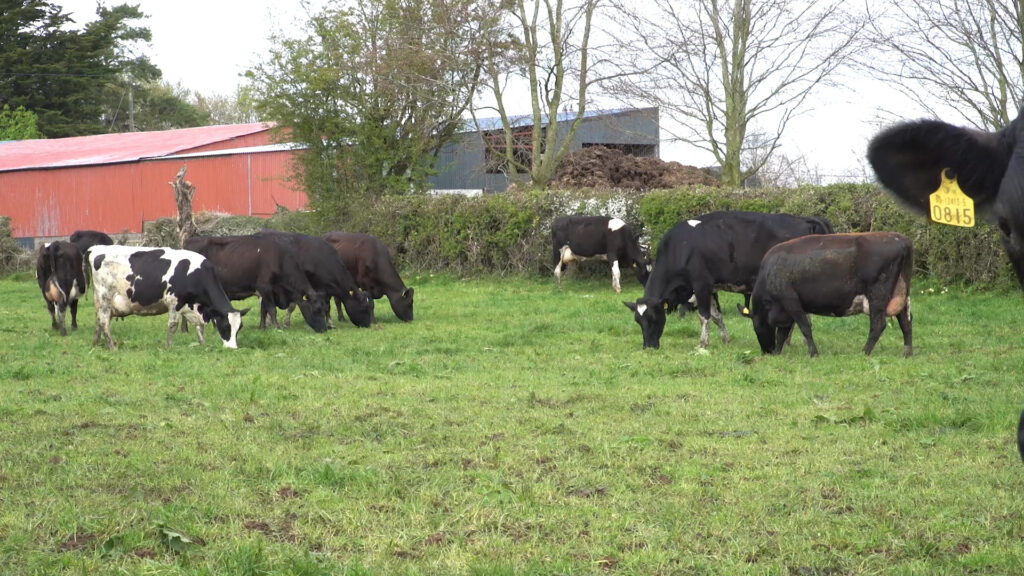Farming in Doon, just outside Ferbane, Co. Offaly, Hughie Egan runs a herd of 85 Kiwi-cross cows under a spring-calving system.
The farm is fragmented and the Offaly-based farmer zero-grazes some of his paddocks. Originally, the herd was made of predominately Holstein Friesian cows with a focus on winter milk production.
However, a move to a spring-calving system was executed and Kiwi genetics were introduced in recent years in an effort to boost milk solids, overall profitability and to suit the system run on the farm.
With the 2019 breeding season around the corner, Hughie outlined his plan on the latest episode of FarmLand.
“The Holstein Friesian cows on the farm are bred to Kiwi sires. For 2018, these included: Beamer; Beaut; Sierra; and Buster and – between this and carrying 25 replacement heifers on an out farm – we use 100 dairy straws at the start of every year,” he explained.
Once this has been carried out, Hughie switches to beef straws.
“The beef calves over the past few years were Hereford, Aberdeen Angus and some Belgian Blue. We were choosing these sires on calving difficulty and gestation length being the two most important traits – definitely minus or even for gestation.
“We would always try to keep the calving difficulty at 2% or slightly below that,” he added.
Commenting on the 2019 calving season, he outlined that calves were harder to sell off the farm. Therefore, the Offaly man hopes to increase calf value by having a more salable product for beef farmers.
With this in mind, Hughie sat down with his local Teagasc advisor, Jim Moyles, to look at the options available. For the first time, he has chosen bulls from the Dairy Beef Index (DBI) which was made available earlier this year.
The DBI ranks beef bulls – for use in the dairy herd – according to their genetic merit for a range of calving performance and carcass performance traits.
For the breeding season ahead – which is due to commence on May 7 – a team of four beef bulls – two Aberdeen Angus and two Hereford – have been selected from the DBI that are positive for carcass weight and conformation, without being excessively hard-calving for the dairy herd.
The Aberdeen Angus bulls include AA2163 and TZR, while the Hereford bulls are SPL and HE4045.
The calving difficulty of the bulls selected ranges from 1.9% up to 3.2%, with the easier calving bulls targeted at younger and smaller cows, while those of higher calving difficulty will be mated to the more mature cows.
Hughie stressed the importance of producing good-quality calves – both for himself the dairy farmer, and the beef producer who will rear and finish the calf.
“It’s important for me, a dairy farmer, to have an outlet for the calves and I think it’s important for dairy farmers going forward that we look out for the beef farmers as well.
“They need to know what they are buying is going to leave them a margin at the end of the day.
“I have return customers and I want to have return customers going forward. I need the beef farmers coming back to me to buy the calves, so it’s important that I can show them these figures and that we can both work together ensuring I get a margin and he/she has a margin his end,” he concluded.



